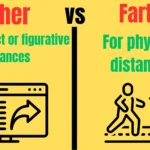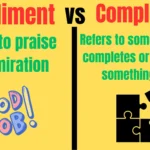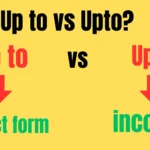In the world of communication, the ability to ask or pose a question effectively is crucial. Yet, many people use “ask” and “pose” interchangeably without considering their nuanced differences.
Understanding these differences can enhance both everyday interactions and professional dialogues.
This blog post explores the distinctions between asking and posing questions, providing practical advice on when and how to use each approach.
Understanding the Terms: Ask vs. Pose
Defining “Ask”
To ask a question is to seek information or clarification. It’s a direct request for an answer. This term is often used in informal contexts and implies a straightforward quest for specific information.
Examples of Asking:
- “What time is the meeting?”
- “Can you explain this concept?”
Characteristics:
- Direct: Focuses on obtaining a clear answer.
- Immediate: Typically used in everyday interactions and practical situations.
Defining “Pose”
To pose a question is to present it in a way that encourages discussion or reflection. This term is often associated with formal, academic, or philosophical contexts where the goal is not just to get an answer but to provoke thought or debate.
Examples of Posing:
- “What are the ethical implications of AI in our daily lives?”
- “How might climate change impact global economies in the next decade?”
Characteristics:
- Reflective: Aims to stimulate deeper thinking and discussion.
- Structured: Often used in academic or theoretical settings.
When to “Ask” a Question: Practical Applications
Seeking Specific Answers
Asking questions is crucial when you need precise information. It’s about clarity and efficiency, ensuring that the recipient understands exactly what you’re looking for.
Situations for Asking:
- Personal Interactions: In everyday conversations where you need quick, straightforward answers.
- Professional Settings: During meetings, interviews, or customer service inquiries where clear responses are necessary.
Examples:
- “Where is the nearest coffee shop?” (Personal)
- “Can you provide a summary of the project’s progress?” (Professional)
Daily Life Examples
In daily interactions, asking questions helps to clarify, confirm, or gather information. For instance:
- In a Grocery Store: “Which aisle is the milk in?”
- At a Doctor’s Office: “What time is my appointment?”
Professional Settings
In the workplace, effective questioning can streamline processes, resolve issues, and enhance collaboration. Examples include:
- During Meetings: “Can you elaborate on the new marketing strategy?”
- In Interviews: “What are the key skills you’re looking for in this role?”
The Art of Posing Questions
Sparking Ideas and Discussions
Posing questions is an art form that encourages dialogue and exploration. It’s about opening up a topic for discussion and allowing for multiple perspectives.
Techniques for Posing:
- Open-Ended Questions: These require more than a yes/no answer and encourage detailed responses.
- Thought-Provoking: Designed to stimulate thinking and engage participants in meaningful dialogue.
Academic and Philosophical Contexts
In academic writing and philosophical debates, posing questions is a method for exploring complex ideas and challenging existing viewpoints.
Examples:
- Academic Essays: “How does the theory of relativity influence modern physics?”
- Philosophical Debates: “What is the nature of consciousness?”
Crafting Thought-Provoking Questions
To create impactful questions that spark interest and discussion, consider the following tips:
- Be Specific: Tailor your question to the topic at hand.
- Encourage Exploration: Frame questions to invite various viewpoints.
Examples:
- “How might the concept of free will be understood in a deterministic universe?”
- “What are the potential societal impacts of universal basic income?”
Comparative Analysis: Ask vs. Pose
Direct Questions vs. Open-Ended Questions
Direct Questions: These typically seek specific information and are best used when clarity is needed. They often start with who, what, where, when, or how.
Examples:
- “What time is the meeting?” (Direct)
Open-Ended Questions: These encourage elaboration and discussion, making them ideal for generating insights and facilitating conversation.
Examples:
- “What are your thoughts on the future of renewable energy?” (Open-Ended)
Impact on Conversations
Choosing whether to ask or pose a question can significantly affect the direction and depth of a conversation. Direct questions can lead to precise answers, while posed questions can foster deeper discussion and exploration.
Comparison Table:
| Aspect | Ask | Pose |
| Purpose | Obtain specific information | Stimulate discussion and reflection |
| Context | Everyday and professional settings | Academic and philosophical settings |
| Response Type | Clear, concise answers | Detailed, multi-faceted responses |
| Example | “What is your name?” | “What does identity mean in the digital age?” |
Practical Tips: Mastering the Art of Questioning
Effective Questioning Techniques
- Know Your Goal: Determine whether you need specific information or want to spark discussion.
- Be Clear and Precise: For asking, ensure your question is straightforward.
- Encourage Dialogue: For posing, frame your questions to invite multiple perspectives.
Examples:
- Asking: “How do I access the project files?”
- Posing: “What are the potential challenges of remote work in team dynamics?”
Balancing Between Asking and Posing
Use asking for situations where clear answers are needed quickly. Opt for posing when the goal is to encourage deeper exploration or discussion.
Strategies:
- For Immediate Information: Ask directly.
- For Thoughtful Insight: Pose questions to foster a rich dialogue.
Conclusion
Understanding the difference between “ask” and “pose” a question can enhance your communication skills significantly. By recognizing when to use each approach, you can effectively seek information or stimulate thoughtful discussion, depending on your needs.
Reflect on how you use questions in your interactions and aim to balance clarity with depth for better communication outcomes.

As an experienced English teacher, I’m Jessica Thompson, here to make grammar and vocabulary simple and fun. Join me on TalkSpeaker as we explore the language together, one lesson at a time!



